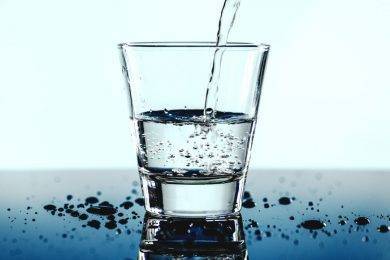Did you know that the global bottled water market was worth over $283 billion in 2021?
It’s a product that’s growing in popularity and it’s not just mineral water that’s driving the trend. Distilled water is an important product, used in cars, homes, and industries such as hydroponic farming. Most of us are probably going through quite a few bottles, especially if you run a humidifier.
But guess what? You can make distilled water at home, saving you big when you hit the shops! Let’s take a look at how to make distilled water so you’ve got it on hand at all times.
What Is Distilled Water?
Distilled water is regular water that was been through a distillation process to remove impurities. There are lots of minerals in water that you don’t want in some household and industrial settings. For example, you may use distilled water in your steam iron so that deposits of lime and calcium don’t form and mark your clothes.
The basic principle of distillation is to convert a liquid into a vapor and then cool it back down into a liquid. With distilled water, impurities remain in the original container. The distilled water is collected in a second container.
What Are the Benefits of Distilled Water?
It’s possible to drink distilled water and it’s not in any way dangerous. However, it is just pure water.
The benefits of drinking distilled water are limited. They mainly come from having all contaminants such as chlorine removed. It doesn’t have the health benefits of mineral water, which can contribute to heart health.
Most people don’t like the taste of distilled water because it’s been stripped of all the minerals that add flavor to water. It just tastes flat and boring. If you only drink distilled water, you’ll miss out on nutrients like potassium.
However, it’s very beneficial to use in many household, automotive, and industrial settings. It leaves no residue when it boils. It won’t corrode engine parts and doesn’t have contaminants, making it perfect for use in the lab.
It’s also used in the medical industry as part of the dialysis process. The blood is filtered using this ultra-clean form of water. It also finds its way into many cosmetics that list water as an ingredient.
How to Use Distilled Water
Distilled water is a useful item to keep in stock at home. It’s not strictly necessary in all these applications, but it’s the gold standard in many of them.
Household Uses
In the home, it’s very useful in humidifiers.
Humidifiers can get smelly very quickly if you use regular tap water. But distilled water helps to keep it smelling fresh. It’s also better for you to breathe in and won’t release mold into the air.
Find out where to buy distilled water, or try making it yourself following the method below.
Did you jump on the sourdough and fermenting craze during the early part of the pandemic? Turns out that distilled water is perfect for:
- Sourdough cultures
- Water kefir
- Kombucha
- Cultured vegetables
Check your recipe first and make sure that it’s the right fit.
If you or a family member has sleep apnea, you may rely on a CPAP machine to keep your firing on all cylinders. One of the benefits of distilled water is that it can make your humidifier last longer.
In the Car
Distilled water works great mixed with coolant in your car’s radiator. If you use tap water, it will leave deposits in your radiator, which can cause corrosion and shorten its life.
You can also try mixing distilled water with your windshield washer fluid. Window washers sometimes use purified water because it’s so effective at removing dirt from glass. It won’t leave any residue or watermarks on your windshield, giving you an outstanding result!
How to Make Distilled Water Yourself
Now you’ve heard all the benefits, let’s examine how to make distilled water yourself. Grab the following materials:
- Large cooking pot with a curved lid
- Heavy glass bowl that fits inside the pot
- Stove
- Ice cubes
Take regular water and put it into the pot. Place your bowl in the pot of water, making sure that the water doesn’t spill into the bowl. Heat the water to boiling point and put the lid on the pot.
The water will condense on the lid and start to drip into the bowl inside. If the lid doesn’t fit tightly, reverse it so that the domed part faces downwards toward the bowl. Put ice on top of the lid to speed up the process.
Once the water has all evaporated, take the pot off the heat and allow it to cool. Inside you have a bowl of distilled water, ready for use. Put it into a bottle with a tight-fitting lid until you need to use it.
Store distilled water away from sunlight in tightly sealed bottles. They won’t last as long as store-bought as they won’t have a perfect seal.
A Note on Homemade Distilled Water
In a pinch, homemade distilled water is great and will do most of the jobs store-bought will do. This method also works if you’re camping and can’t find a potable water source.
But remember that it won’t drive off everything, especially chlorine. If you want to make sure that your distilled water is chlorine-free, you’ll have to find a supplier that notes this on the label.
An Endless Supply of Pure Water
Now you know how to make distilled water at home, you’ve potentially got an endless supply!
That’s great for humidifiers, CPAP machines, and steam irons. They’ll reduce the build-up of minerals and impurities and will help extend the life of these machines.
For more helpful hints, tips, and hacks, check out our Lifestyle section today!











